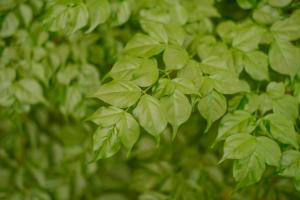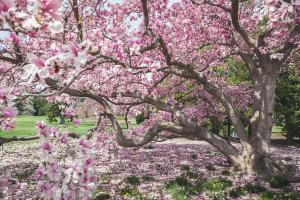Can Crabapple Trees Be Planted in Part Sun?
Crabapple trees are known for their stunning display of colorful blooms in the spring and their attractive fruit in the fall. They are versatile and hardy trees that can thrive in various growing conditions. However, many people wonder whether crabapple trees can be planted in part sun. The answer is yes. Crabapple trees can grow well in areas with partial sun exposure, but there are some factors you need to consider before planting them in these conditions.
Understanding the Sunlight Requirements of Crabapple Trees
Before discussing whether crabapple trees can grow in partial sun, it is essential to understand their sunlight requirements. Crabapple trees need direct sunlight for a minimum of four to six hours a day to thrive. They perform best in areas with full sun exposure, but they can tolerate partial sun exposure, which is defined as areas that receive direct sunlight for three hours or less per day. However, crabapple trees planted in these conditions may not grow as vigorously or bloom as prolifically as those planted in full sun.
Selecting the Right Crabapple Tree for Partial Sun
If you plan to plant a crabapple tree in partial sun, it is crucial to choose the right type of crabapple tree. Not all crabapple trees are suitable for partial sun exposure. Some cultivars can tolerate partial shade better than others. When selecting a crabapple tree, look for one that is described as "partial shade" or "partial sun" tolerant. These types of crabapple trees are better adapted to growing in areas with limited sunlight, and they are more likely to perform well in these conditions.
Planting and Care for Crabapple Trees in Part Sun
When planting a crabapple tree in partial sun, it is crucial to provide adequate soil preparation and care. Crabapple trees grown in partial sun conditions can be more susceptible to diseases and pests, so it is essential to give them the best possible growing environment. Start by selecting a site with well-draining soil and good air circulation. Avoid planting a crabapple tree in an area with standing water or areas prone to drought.
When planting, dig a hole deep enough to accommodate the root ball of the tree, and add a layer of organic material to improve the soil's structure and fertility. Water the tree after planting, and provide regular watering throughout the growing season, especially during prolonged periods of drought. Apply a slow-release fertilizer in the spring, and monitor the tree for signs of disease or pest problems.
The Benefits of Planting Crabapple Trees in Part Sun
Although crabapple trees perform best in full sun, planting them in partial sun conditions can have its benefits. For instance, planting a crabapple tree in an area with limited sunlight can help protect it from late spring frosts, which can damage tender buds and blossoms. Additionally, crabapple trees planted in partial shade conditions tend to have fewer pest problems than those planted in full sun.
In summary, crabapple trees can grow in areas with partial sun exposure, but they require proper soil preparation and care. To boost the tree's chances of success, it is crucial to choose a cultivar that is tolerant of partial shade, provide adequate irrigation, and monitor the tree for signs of disease or pest problems. By taking these steps, you can enjoy the beauty of a crabapple tree's blossoms and fruit, even in partially sunny areas.

 how many times do yo...
how many times do yo... how many planted tre...
how many planted tre... how many pine trees ...
how many pine trees ... how many pecan trees...
how many pecan trees... how many plants comp...
how many plants comp... how many plants can ...
how many plants can ... how many plants and ...
how many plants and ... how many pepper plan...
how many pepper plan...



























